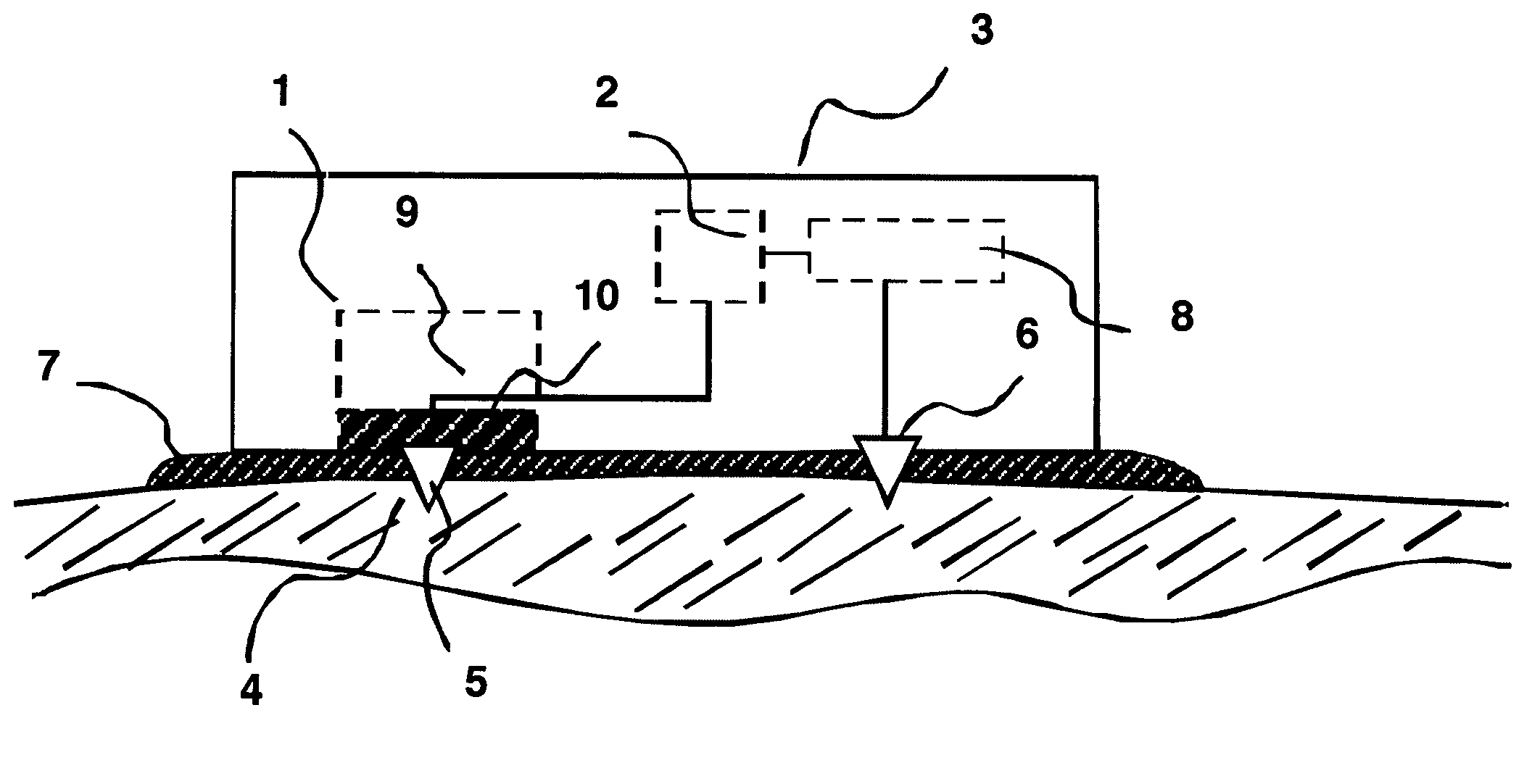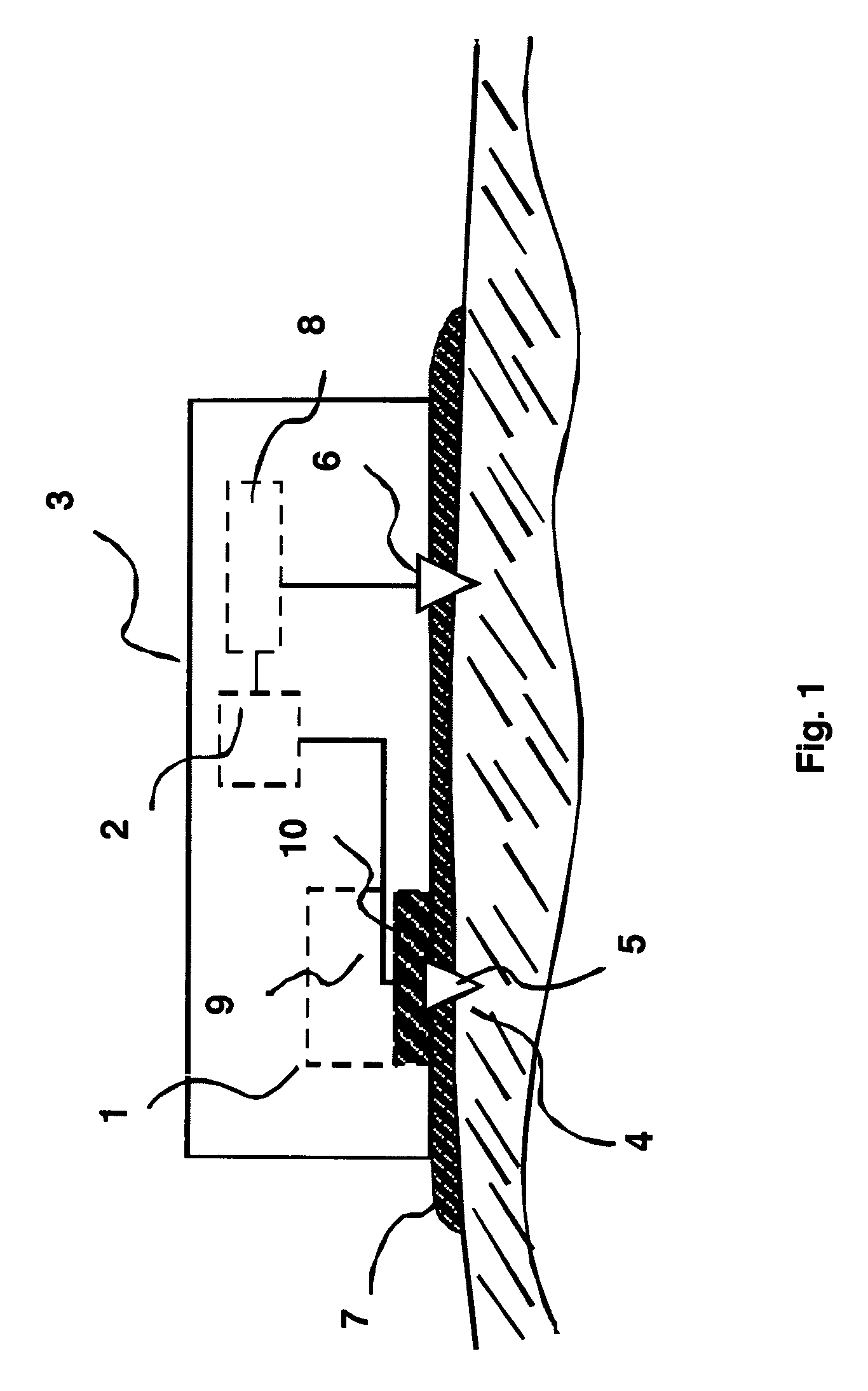Feedback control device for transcutaneous drug delivery and uses therefor
a technology of transcutaneous drug delivery and control device, which is applied in the field of biomedical physics and drug delivery, can solve the problems of increased permeability to substances, transient alteration of skin, and burns in patients
- Summary
- Abstract
- Description
- Claims
- Application Information
AI Technical Summary
Benefits of technology
Problems solved by technology
Method used
Image
Examples
Embodiment Construction
[0027]One embodiment of the present invention provides a device—for altering a biological membrane in an individual comprising a means for delivering energy to the surface of the biological membrane; a means for monitoring a physiological state of the biological membrane during delivery of the energy; a means for modulating delivery of the energy to the biological membrane where the modulating is in response to a change in the monitored physiological state; and a housing means for the device.
[0028]In an aspect of this embodiment, the means to delivery the energy comprises an energy delivery system; at least one first active electrode in electrical contact with a treatment site on the biological membrane; and a second return electrode distal to the first electrode and in electrical contact with the biological membrane. The delivery means may also have an electrically conductive fluid interface between the first electrode and the biological membrane or between the first and second ele...
PUM
 Login to View More
Login to View More Abstract
Description
Claims
Application Information
 Login to View More
Login to View More - R&D
- Intellectual Property
- Life Sciences
- Materials
- Tech Scout
- Unparalleled Data Quality
- Higher Quality Content
- 60% Fewer Hallucinations
Browse by: Latest US Patents, China's latest patents, Technical Efficacy Thesaurus, Application Domain, Technology Topic, Popular Technical Reports.
© 2025 PatSnap. All rights reserved.Legal|Privacy policy|Modern Slavery Act Transparency Statement|Sitemap|About US| Contact US: help@patsnap.com


